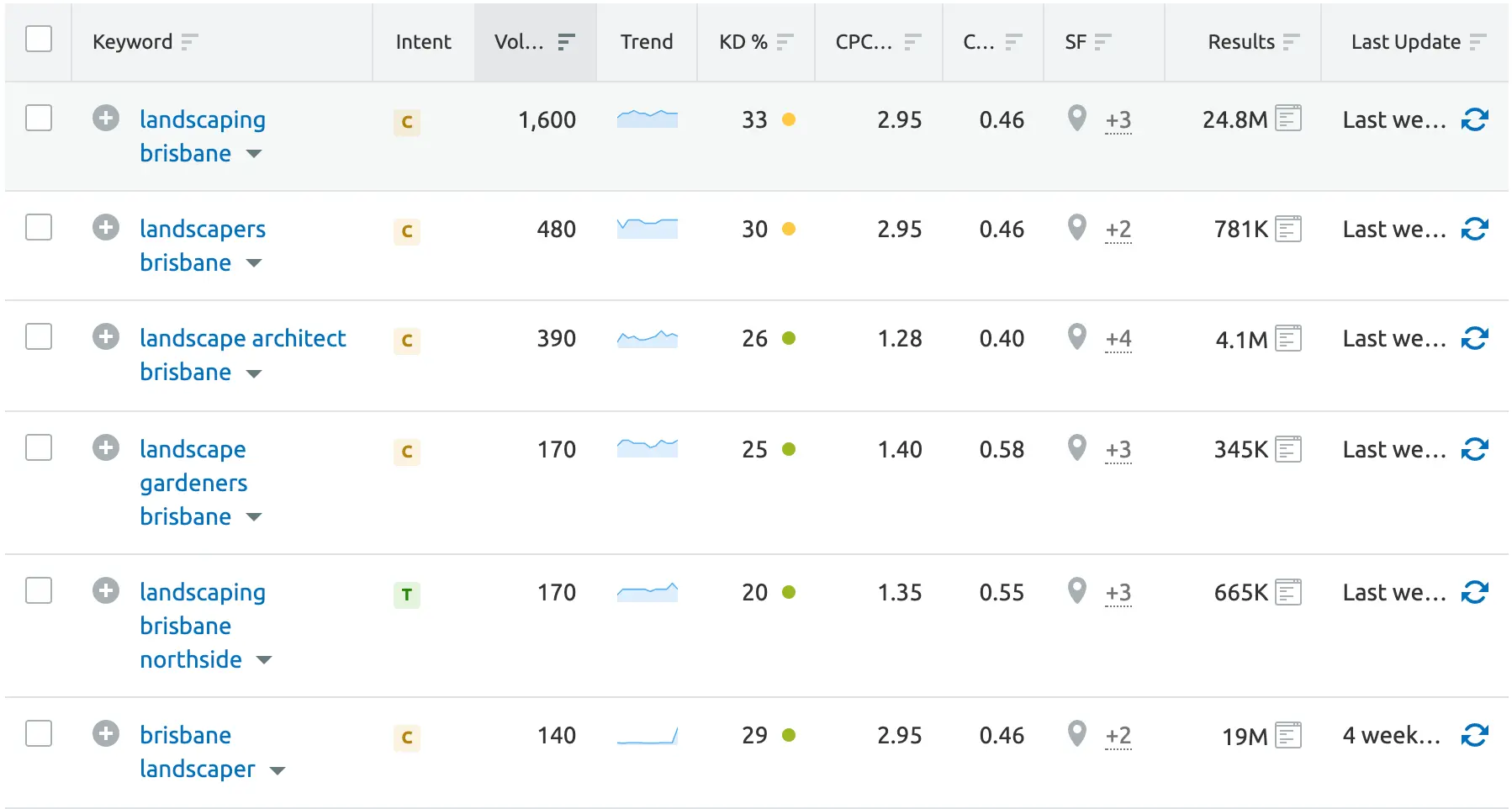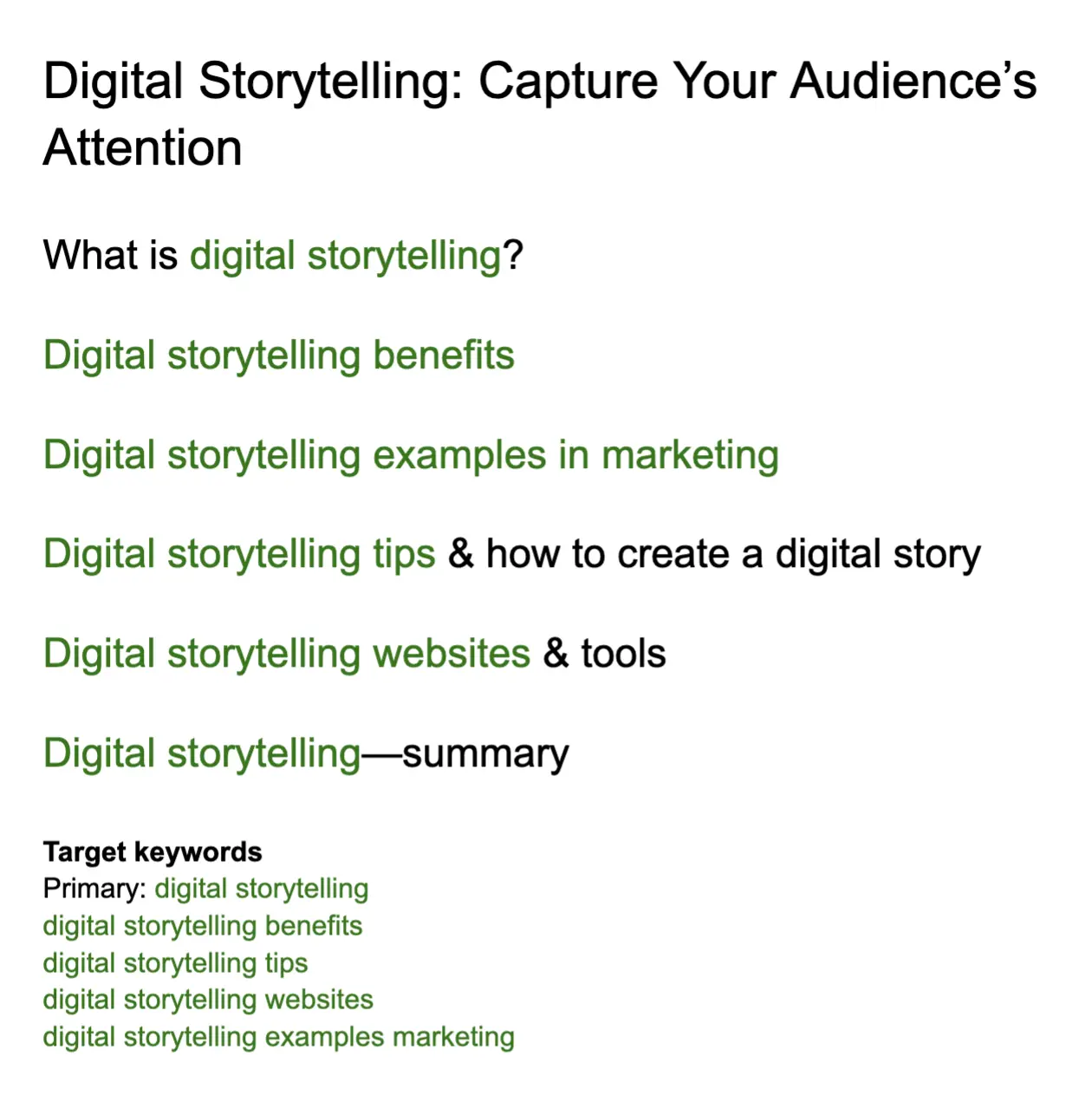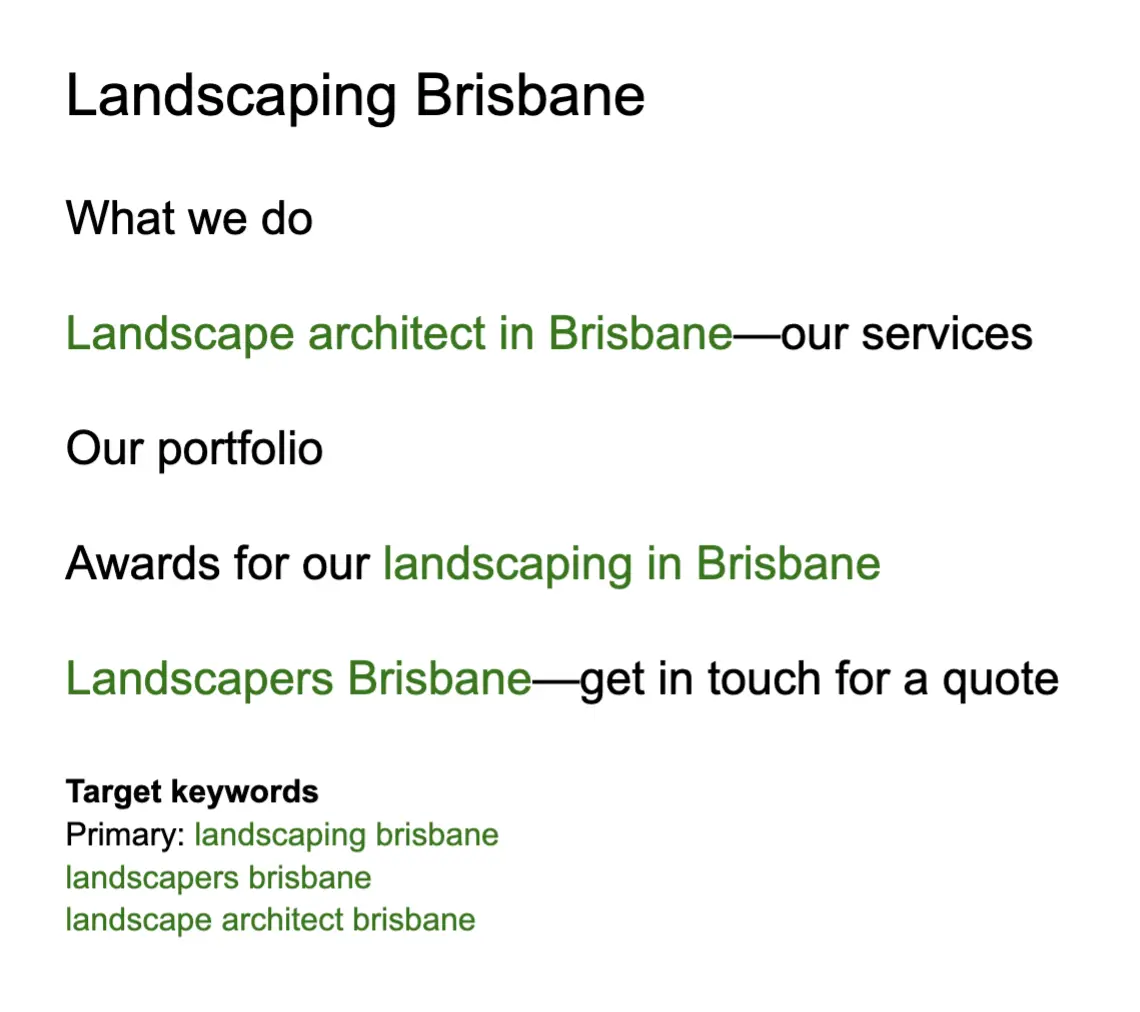SEO Copywriting For High Rankings & Strong Click Rates
Have you spent hours writing content that search engines seem to ignore? You’re not alone. There’s about a trillion web pages on the internet,1 so Google and other search engines can’t possibly rank them all highly. Their algorithms determine whether the content is useful, authoritative, and relevant to the user’s search, and then assign an appropriate ranking. So if the content on your pages isn’t optimised for SEO, satisfying the algorithm’s logic in all of the best ways, it won’t be found. That’s why SEO copywriting is so important. It can be the difference between attracting hordes of visitors, or a disappointing few.
In this article, we’ll provide a step-by-step guide on SEO copywriting, so that you can write effective copy for your website, and start attracting more visitors. If you’d like read a related article, check out our piece on the link between SEO and content marketing, which shows how crucial good content is for high Google rankings.
What is SEO copywriting?
SEO copywriting is writing human-friendly content that ranks well in search engines. The content should be readable, well-structured, and include keywords that search engines associate with the topic being written about.
For example, a comprehensive guide on marketing budgets might include information like the benefits of a marketing budget, how to create a marketing budget, and some marketing budget examples. The SEO copywriter’s goal is to research this information, and then turn it into useful, digestible digital media content, structured in a way that includes well-placed keywords that don’t sacrifice the readability of the guide. When this goal is achieved, it’s much more likely to be found and indexed by search engines. Users will also spend more time on this page, “bounce” from the website less frequently, and link to it more often from their own websites—all positive user signals that will further improve the page’s ranking.
A step-by-step guide to SEO copywriting
Before we start, this process assumes that you already have a topic to write about, and a primary keyword to target. This keyword would have been identified as a worthy subject with enough search volume to justify the work.
Topics and keywords are found through keyword research, which is a big subject all by itself. But if you need some guidance, check out SEJ’s awesome eBook on keyword research.
1. Define the user’s intent
When it comes to SEO copywriting, there’s essentially two types of content you’ll create:
- Informational content that provides desirable information to the user, such as blogs, eBooks, and industry reports.
- Transactional content that helps to sell a product or service, like a homepage for a business, or a page that describes one of their services.
These content types are defined by something called “user intent,” which is the user’s reason for visiting your page. Do they want to learn about something, or do they want to buy something? The distinction is crucial because the content is written in different ways. Informational content is purely educational, and aims to teach the reader about something they want to learn. Transactional content is also educational, but its main purpose is to sell something to the reader, so has a much more “salesly” tone, and includes plenty of buttons and forms that call the reader to action.
Once you’re clear on the type of content you’re writing, you can move onto the next step: keyword research.
2. Keyword research
A search engine is able to figure out a webpage’s topic by the words that are included. That’s why keyword research is so important—it helps you to identify phrases that are commonly related to a topic, so that search engines know what it’s about, and can accurately match it to people’s searches.
Because you already have a target keyword in mind, keyword research will help you discover the subtopics that should be covered in the article. You’ll just need to put in your target keyword into a research tool like SEMRush or Ahrefs, and you’ll be provided with heaps of related keywords that can be considered for your subtopics.
For example, if you wanted to write an informational blog on how to create a sales process, you would enter “sales process” into SEMRush’s Keyword Magic Tool, and get the following list of results:
From these suggested keywords, you might select “sales process flowchart,” “7 stages of sales process,” and “explain the sales process,” because they can easily be turned into headings/sections in your blog, and will provide useful information to the reader. That’s the trick to selecting target keywords—they should be related to your content, provide genuine value to the reader, and if possible, work nicely as headings.
Here’s an example of a transactional page that is promoting a landscaping business in Brisbane:
From this list, you’ll probably want to target “landscaping brisbane,” “landscapers brisbane,” and “landscape architect brisbane,” although pretty much every one of them can be targeted if appropriate for your audience.
When you’re selecting keywords to target, don’t worry too much about the search volume. Just be sure to pick keywords that are suited to your content.
Another great technique for getting related keywords is Google itself. When we search for “sales process” in Google, it displays a list of related topics in dropdowns:
This isn’t a great example because you’d probably only want to cover just one of these processes to keep things simple. But look what happens when we search for “landscaping brisbane”:
Those would work wonderfully as headings/sections on your transactional page, because they’re common questions that people ask. If Google is recommending this information in their search results, you can be sure that it’s based on their own data, so is an excellent lead to follow.
3. Create your outline
Now that you have your list of target keywords, you should be able to easily create an outline for your content, with your keywords forming your H2 headings. A content outline with keyword-rich headings is awesome for a number of reasons:
- It’s easier for search engines to understand what your page is about, which boosts SEO.
- It creates a clear structure for your page, and makes it easier for the reader to digest.
- It’s easier for you to write the content because the headings are neatly-grouped sub-sections of information that you can fill in (rather than being faced with a daunting blank page).
When writing headings, try to make them sound as natural as possible, so it doesn’t seem like you’re shoehorning keyword phrases into them. Here’s the outline of an informational blog we wrote on digital storytelling, with the keyword phrases highlighted in green:
Every one of those headings makes sense in the context of the blog, and is useful information for the reader. Try to do the same with your headings and keywords.
Here’s an outline of a transactional service page, using the landscaping keywords we found earlier:
With transactional pages, you can usually include your keywords in most headings, and just separate them with an em dash or vertical line symbol ( | ). Just make sure it sounds reasonably natural.
Creating an outline is an important step, so you may need to go back to your keyword research if your headings aren’t suited.
4. Write the content
Now comes the hard part: writing the content!
As recommended by pretty much every writing coach you’ll come across, don’t worry about the quality of your first draft. Just start getting your ideas down, and polish them up later in the editing process.
These are our top SEO copywriting tips for this stage:
Be comprehensive
If you really want to rank well for SEO, the best advice we can offer is to address your topic comprehensively. If you’re writing an informational guide on self storage units, you’ll want to talk about common uses, types and sizes, climate control, pricing, and more. If you’re writing a transnational page to promote your graphic design services, you’ll probably want to include your services, portfolio, preferred design styles, and the best way to get in touch.
Remember that people are coming to your page for information, so by giving them as much relevant information as possible, and grouping it neatly into headings, it’s much easier for them to find what they’re looking for. They’ll stay for longer, bounce less frequently, and are much more likely to get in touch (if that’s what your goal is. Check out more ways to improve conversion rates through copywriting).
Don’t worry about keywords
Writing is hard enough as it is, without trying to stuff keywords into your sentences as you go. Forget about keywords for now, and just get your words onto the page. You can add them in later.
Add the most important information first
There’s an old saying in journalism called “burying the lede,” which means leaving the most important information until the end of the article. When this happens, the reader might struggle to figure out what’s important because the writer’s message hasn’t been properly communicated. It will also be harder for search engines to prioritise and rank the content, for the same reason.
You can define importance in a couple of ways:
- What you believe the reader wants to know first
- The search volumes for your targeted keywords. The higher the volume for a keyword, the more people are searching for it, which gives the information a higher priority.
Write simply
Most people don’t read webpages, they scan them for the information they’re looking for, using headings as guides. To support this behaviour, keep your language super simple, and your sentences short. People who are looking for advice or trying to solve a problem don’t want to read content packed with five-syllable words, or sentences that go on and on and on…
The easier the page is to read and digest, the stronger its usability signals will be, and the better SEO it will have.
You can check the readability of your content using a Flesch readability test, which gives it a score between 1 and 100, and breaks it down by ease of reading. Try to aim for a score of 60+, as shown in the table below.
| Flesch score | School grade reading level | Ease | Syllables per 100 words | Average sentence length |
| 90 – 100 | 5 | Very easy | 123 | 8 |
| 80 – 90 | 6 | Easy | 131 | 11 |
| 70 – 80 | 7 | Fairly easy | 139 | 14 |
| 60 – 70 | 8 – 9 | Standard | 147 | 17 |
| 50 – 60 | 10 – 12 | Fairly difficult | 155 | 21 |
| 30 – 50 | College | Difficult | 167 | 25 |
| 0 – 30 | College graduate | Very difficult | 192 | 29 |
Use the Flesch test as a guide rather than a hard rule. Your content might naturally include lots of longer words that are necessary for your points, in which case a lower Flesch score is fine.
Use examples and metaphors where possible
When we’re reading about an abstract concept, it’s so much easier for us to understand when examples are given or metaphors are used. Take this simple example:
As a star ages, it expands until it eventually collapses in on itself.
This should make sense to most people, but can be made more evocative by adding a metaphor:
As a star ages, it expands until it collapses in on itself, like a beach ball that has had its air suddenly sucked out.
The second version isn’t just easier to visualise, it’s much more interesting to read, and will keep the person on the page for longer. It’s more fun to write too!
5. Edit your content
Once you’re done with writing, and happy that the points you’ve made are important and relevant to your intended readers, you can start the editing process.
The goal of editing is to polish your work to make it more enjoyable and readable. Read through each sentence and improve any that might be confusing, vague, or just sound a bit crap. Be ruthless during this process!
Here are some general rules to follow when editing, which can make your writing shine:
- Remove unnecessary “filler” words. We often stuff sentences with words that can be removed without affecting its meaning. Words like “just” “even” and “that” are some common culprits. Here’s more.
- Swap big words for small words. If you can replace a smaller word with a big word without changing the meaning of the sentence, do it. It will make your content easier to read, and keep people on the page for longer.
- Use the active voice. E.g. journalists write reports, not reports are written by journalists. This style of voice is much more direct and compelling.
- Nouns and verbs represent things and actions, which is how we best understand the world. If suitable, use as many nouns and verbs as you can.
- Swap ambiguous words (creatures) for concrete words (snakes). Ambiguous words are hard to visualise and boring to read.
- Remove adverbs.
- Remove cliches—they’re predictable and dull!
- Use metaphors, similes, and comparisons if appropriate.
6. Consider a table of contents
If you’re writing an informational page, a table of contents helps the reader understand what they can expect. It’s also a great way to jump to the section they’re after, providing excellent usability on both counts.
7. Write the title
When searching for information in Google or another search engine, the page’s title is what people see first. It’s the main thing that tells them whether or not they should click on the page, which makes it absolutely crucial.
Your title should be concise, intriguing, and will accurately describe the content of your page. We talked about how to write great meta titles in our How To Improve CTR article, if you’d like to learn more.
8. Optimise
With your content fully written and edited, now is the easiest time to add in extra SEO optimisation. We work throughout a checklist at Media Heroes, aiming to tick off as many points as possible, to give the content the best chance of ranking. Here’s our full checklist:
- Include the content’s primary keyword in the title.
- If possible, include every keyword in a H2, and the same keyword in the paragraph immediately below the H2.
- Include the primary keyword in the first and last paragraphs of the content.
- Include the primary keyword at least 5 times in the article (this often happens naturally anyway).
- Include the other keywords at least once in the article.
- Use the primary keyword in the file name of the content’s main/featured image, using dashes to separate any words.
- Use your other keywords in the file names of other images in the content, again using dashes to separate any words.
- Use keywords in the ALT text (the same keyword as for the file name) of images.
- Include your primary keyword in the URL, using dashes to separate any words.
- Include the exact primary keyword in the meta description. Also really try to sell your content in this area.
As mentioned before, when adding additional keywords to an article, only use it if the sentence is grammatically correct, and sounds good. It’s better to have a meaningful sentence without a keyword than a clumsy sentence with a keyword. The more natural the article sounds, the easier it will be to read, and the better user signals you’ll have, which increase SEO by themselves.
How to write great seo content—further optimisations
If you follow this process for your content, you should have a useful, engaging, and SEO-optimised piece of content with a much higher chance of ranking well in search engines. But there’s even more you can do to strengthen the SEO of your hard-written piece, if you’re willing. These are some of the more effective tactics:
- Backlink building—backlinks were the primary way that Google calculated rankings, but have since been overtaken by quality content. They still play a big role though, so you should consider building backlinks to your content from as many relevant and high authority sites as possible.
- Use topic clusters—when you publish a bunch of content pieces that cover a broad topic, and then link them together, search engines may see you as an authority on the topic and boost your rankings as a result. This can be a potent strategy, and is highly recommended by HubSpot.
- Share on social media—the more traffic your content gets, the more authoritative it will seem to search engines. Be sure to share your content on social media to get as many visits as possible. You might even consider creating an advert for it.
We hope you enjoyed our guide to SEO copywriting, and that it helps you to write killer content for your company. If you’re still struggling to write your own content, you can always use a ghostwriter to help!
References
- John D. Sutter, 2011, How many pages are on the internet?, CNN








